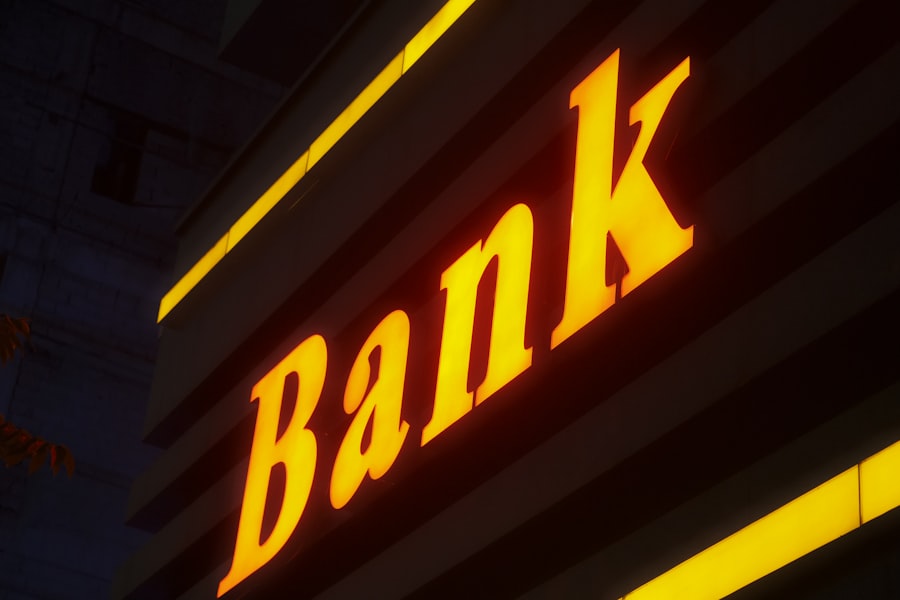In the intricate world of personal finance, consumers often find themselves navigating a labyrinth of fees that can significantly impact their financial health. Hidden bank fees, in particular, represent a substantial concern for many individuals who may not be fully aware of the various charges that can erode their savings. These fees can manifest in numerous forms, often buried within the fine print of banking agreements or obscured by complex terms and conditions.
As a result, customers may unwittingly incur costs that could have been avoided with a more thorough understanding of their banking products. The prevalence of hidden fees is not merely an inconvenience; it can lead to a cascade of financial repercussions. For instance, a seemingly innocuous monthly maintenance fee can accumulate over time, leading to a significant drain on an individual’s finances.
Moreover, the lack of transparency surrounding these fees can foster distrust between consumers and financial institutions. As banks increasingly rely on fee income to bolster their profitability, it becomes imperative for consumers to educate themselves about the potential pitfalls associated with their banking choices. By shedding light on these hidden fees, individuals can make more informed decisions and take proactive steps to mitigate unnecessary costs.
ATM Fees and Out-of-Network Withdrawals
One of the most common hidden bank fees that consumers encounter is the ATM fee, particularly when withdrawing cash from out-of-network machines. While many banks offer a network of ATMs that allow customers to withdraw funds without incurring additional charges, using an ATM outside this network can result in hefty fees. These charges can vary significantly from one financial institution to another, with some banks imposing fees as high as $3 to $5 per transaction.
Furthermore, the ATM operator may also impose its own fee, compounding the cost for the consumer. For example, if a customer of a regional bank uses an ATM owned by a national bank, they may face a $3 fee from their own bank and an additional $2 fee from the ATM operator. This means that a simple cash withdrawal could cost the consumer $5 or more, which is particularly burdensome for those who rely on cash for everyday transactions.
To avoid these fees, consumers should familiarize themselves with their bank’s ATM network and seek out machines that are part of that network. Additionally, some banks offer reimbursement for out-of-network ATM fees up to a certain limit, which can be a valuable feature for those who frequently find themselves away from their bank’s ATMs.
Overdraft Fees and Minimum Balance Requirements

Overdraft fees are another significant source of hidden costs that can catch consumers off guard. When an account holder spends more than the available balance in their checking account, the bank may cover the transaction but will typically charge an overdraft fee in return. These fees can be exorbitant, often ranging from $30 to $40 per occurrence.
For individuals who may not keep a close eye on their account balances, these fees can accumulate rapidly, leading to a precarious financial situation. Moreover, many banks impose minimum balance requirements that must be maintained to avoid monthly maintenance fees or overdraft charges. If an account falls below this threshold, customers may find themselves facing additional penalties.
For instance, if a bank requires a minimum balance of $1,500 and an account holder’s balance dips to $1,400 due to unexpected expenses, they could incur both an overdraft fee and a maintenance fee for not meeting the minimum requirement. To mitigate these risks, consumers should consider setting up alerts for low balances or opting for overdraft protection services that link their checking account to a savings account or line of credit.
Monthly Maintenance Fees
| Month | Number of Units | Total Maintenance Fees |
|---|---|---|
| January | 100 | 5000 |
| February | 105 | 5250 |
| March | 110 | 5500 |
Monthly maintenance fees are another common hidden charge that many consumers overlook when selecting a bank account. These fees are typically assessed for the privilege of maintaining an account with a financial institution and can vary widely depending on the type of account and the bank’s policies. Some banks charge flat monthly fees regardless of account activity, while others may waive these fees if certain conditions are met, such as maintaining a minimum balance or setting up direct deposit.
For example, a customer with a standard checking account might face a monthly maintenance fee of $12 if they do not maintain a balance of at least $1,000 or have regular direct deposits totaling a specific amount each month. Over the course of a year, this seemingly small fee can add up to $144—money that could have been better utilized elsewhere. Consumers should carefully review their account agreements and consider whether they can meet the requirements to avoid these fees or explore alternative banking options that offer no-fee accounts.
Foreign Transaction Fees
For those who travel internationally or make purchases from foreign merchants, foreign transaction fees can be an unexpected burden. Many banks impose these fees on transactions made in currencies other than the U.S. dollar, typically charging around 1% to 3% of the transaction amount.
This means that every time a consumer uses their debit or credit card abroad or makes an online purchase from an international retailer, they may be subject to additional charges that can quickly add up. For instance, if a traveler spends $500 on dining and shopping while abroad and incurs a 3% foreign transaction fee, they would pay an additional $15 simply for using their card in another country. To avoid these costs, consumers should consider using credit cards that do not charge foreign transaction fees or opt for travel-friendly banking options that cater specifically to international travelers.
Additionally, withdrawing cash from ATMs abroad may also incur foreign transaction fees; thus, it is essential to understand the terms associated with any financial product before traveling.
Wire Transfer Fees

Wire transfer fees represent another area where consumers may encounter hidden costs when managing their finances. Banks often charge fees for both incoming and outgoing wire transfers, which can vary significantly based on the institution and whether the transfer is domestic or international. Domestic wire transfers typically incur lower fees—often ranging from $15 to $30—while international transfers can be considerably more expensive, sometimes exceeding $50.
For example, if an individual needs to send money to a family member overseas for an emergency expense and chooses to use their bank’s wire transfer service, they might face a fee of $45 for the international transfer. Additionally, some banks may impose intermediary charges if the funds pass through multiple banks before reaching the recipient’s account. To minimize these costs, consumers should explore alternative methods for transferring money internationally, such as online money transfer services that often offer lower rates and more favorable exchange rates than traditional banks.
Paper Statement Fees
In an increasingly digital world, many banks have begun charging customers for paper statements as part of their efforts to encourage electronic banking practices. While opting for electronic statements can be environmentally friendly and convenient, some consumers may prefer physical copies for record-keeping purposes or simply out of habit. Banks typically charge a fee—often around $2 to $5 per statement—for those who choose to receive paper statements instead of opting for electronic delivery.
This seemingly minor fee can accumulate over time, especially for individuals who receive monthly statements from multiple accounts. For instance, if someone has three accounts and opts for paper statements instead of electronic ones, they could incur up to $15 annually just for receiving physical copies of their statements. To avoid this charge, consumers should consider switching to electronic statements where possible and take advantage of digital tools offered by their banks for tracking transactions and managing finances.
Inactivity Fees
Inactivity fees are another hidden cost that can catch consumers off guard, particularly those who may not use their accounts regularly. Many banks impose inactivity fees on accounts that have had no transactions—deposits or withdrawals—for a specified period, often six months to a year. These fees are designed to encourage account holders to maintain active engagement with their accounts but can be detrimental for individuals who may have temporarily stepped away from banking due to various life circumstances.
For example, if someone opens a savings account but does not make any deposits or withdrawals for over six months due to personal reasons or financial constraints, they might find themselves facing an inactivity fee of $5 per month after the grace period ends. This could lead to unexpected deductions from their savings balance and potentially push them below minimum balance requirements for other accounts as well. To avoid inactivity fees, consumers should regularly monitor their accounts and consider setting up small automatic transfers or transactions to keep their accounts active even during periods of low activity.
FAQs
What are hidden bank fees?
Hidden bank fees are charges that banks impose on their customers for various services and transactions, which may not be clearly disclosed or easily noticeable.
What are some examples of hidden bank fees?
Examples of hidden bank fees include overdraft fees, ATM fees, monthly maintenance fees, paper statement fees, and foreign transaction fees.
How can I avoid hidden bank fees?
To avoid hidden bank fees, it’s important to carefully review your bank statements, opt for electronic statements, use in-network ATMs, maintain a minimum balance, and be aware of the terms and conditions of your account.
Why do banks charge hidden fees?
Banks charge hidden fees as a way to generate revenue and cover the costs of providing various services to their customers.
Are hidden bank fees legal?
Hidden bank fees are legal as long as they are disclosed in the account agreement or terms and conditions provided to the customer. However, some fees may be considered unfair or deceptive under consumer protection laws.









